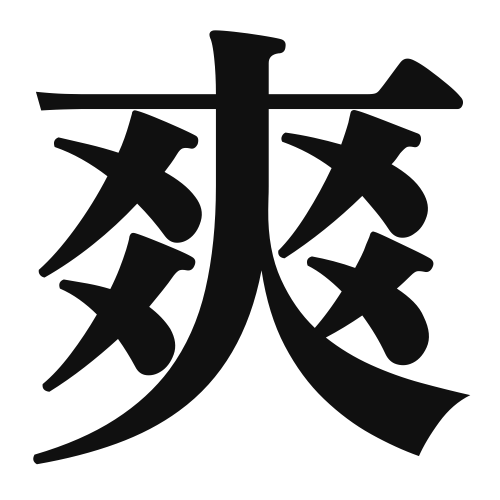1. Overview of Meaning
The kanji “爽” (sō) generally means “refreshing” or “clear.” It conveys a sense of freshness, often associated with a pleasant feeling or a clear state of mind.
2. Formation and Radical
Formation of the Kanji: The kanji “爽” is a phonetic-ideographic character (形声文字). It combines the radical for “wind” (風) on the left, which suggests a refreshing quality, and the phonetic component “sō” (喪) on the right, which contributes to its pronunciation.
Radical: The radical of “爽” is 風 (kaze), meaning “wind,” which emphasizes the refreshing aspect of the character.
3. Examples of Usage
Common Words and Phrases: Some frequently used words that include “爽” are:
- 爽快 (sōkai) – refreshing
- 爽やか (sawayaka) – brisk, refreshing
Example Sentences in Daily Conversation:
- 今日は爽やかな天気ですね。 (Kyou wa sawayakana tenki desu ne.) – The weather is refreshing today.
- この飲み物はとても爽快です。 (Kono nomimono wa totemo sōkai desu.) – This drink is very refreshing.
4. Synonyms and Antonyms
Similar Kanji: A similar kanji is “清” (sei), which means “clear” or “pure.” While both convey a sense of clarity, “清” often relates more to cleanliness or purity, whereas “爽” emphasizes a refreshing quality.
Antonyms: An antonym of “爽” is “不快” (fukai), meaning “unpleasant” or “discomforting,” which conveys the opposite feeling of refreshment.
5. Cultural and Historical Background
Relation to Japanese Culture: The concept of “爽” is often associated with nature and the changing seasons in Japan, where the refreshing feeling of a cool breeze is highly valued.
Proverbs and Idioms: One common expression is “爽やかな風” (sawayakana kaze), which translates to “refreshing wind,” often used to describe a pleasant atmosphere or experience.
